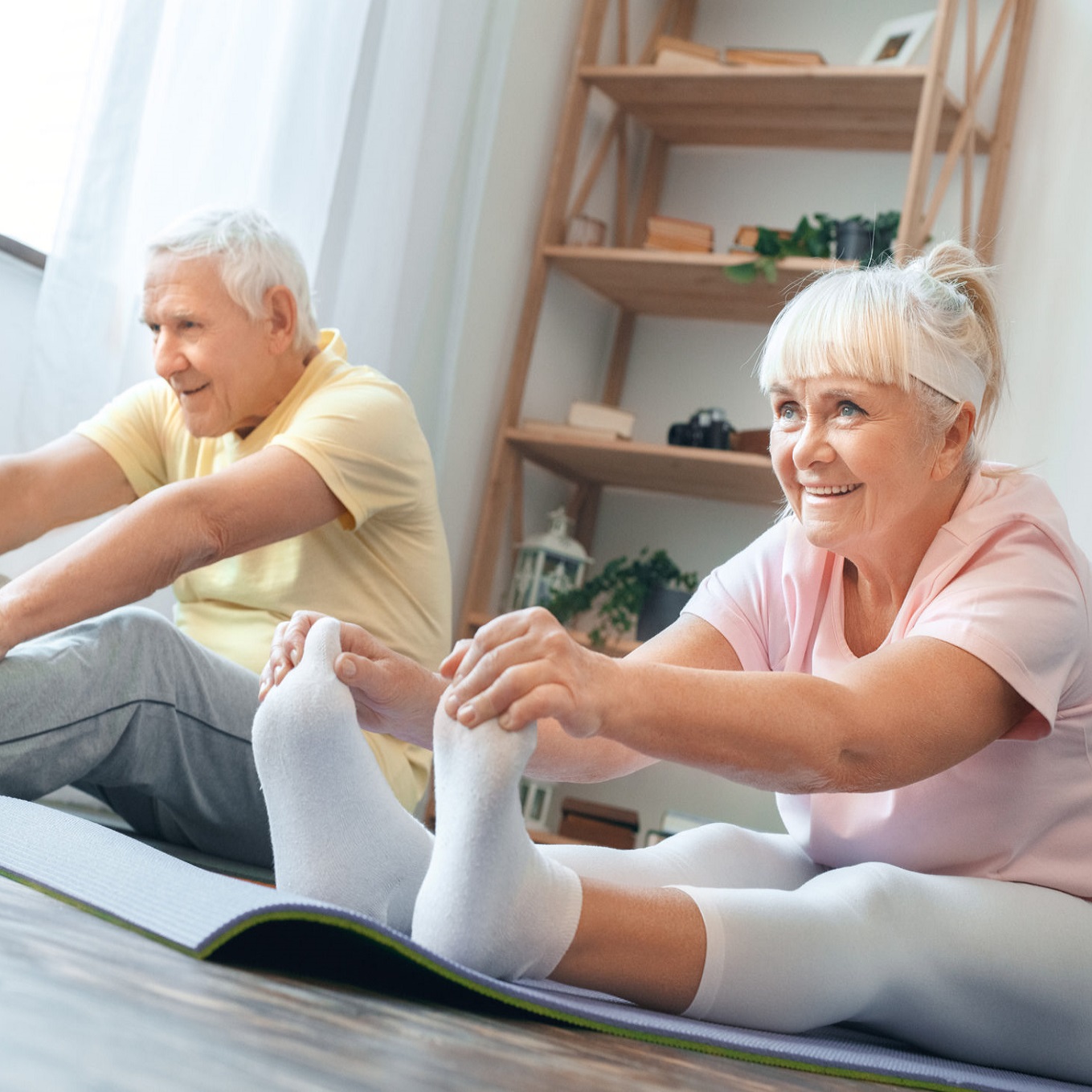Picking up the Pieces After a Fall

January 14, 2021
Typically, we photograph every patient appearing in HealthU. Because this story was planned during the surge of COVID-19, that contact would have been too risky. Instead, our team took a creative approach and replaced photo shoots with illustrated portraits of patients.
Zarah Poosikianb, who is 93 years old, was enjoying an evening at home in May 2020 when an attempt to pick up a stray piece of candy from the floor resulted in a fall.
“I was debating if I should pick it up or not. Then I decided to, but evidently, I came up too fast and turned around too quickly because I went flying,” Zarah says.
His wife, Heidi, called an ambulance, and Zarah was taken to Palisades Medical Center. There, orthopedic surgeon Siddhant K. Mehta, M.D., Ph.D., evaluated him in the Emergency Department and diagnosed him with a hip fracture with five different pieces. Surgery was necessary, and because of Zarah’s age, Dr. Mehta knew it should be done as soon as possible.
“A hip fracture in an older patient is an emergency because the longer we wait to do surgery, especially past 48 hours, the higher the risk of morbidity and mortality,” says Dr. Mehta.
Surgery went smoothly, despite it being a challenging fracture. Dr. Mehta was able to manipulate the fractured pieces into the correct alignment, and then insert a metal rod the entire length of the femur bone, from Zarah’s hip to just above his knee.
This type of surgical repair makes it safe for patients to put their full weight on their leg as soon as they feel able to. “The goal is to allow older patients to become mobile again, so that they don’t become bedridden or develop lung complications,” Dr. Mehta says.
Higher Risk
Because of Zarah’s age, he was at higher risk for surgery complications and COVID-19. “With older patients, it’s not the actual surgical procedure that we’re most concerned about, but the anesthesia that has a high cardiac risk. But Mr. Poosikianb did really well under anesthesia,” Dr. Mehta says.
Because of COVID-19 precautions, Zarah was tested for the virus in the Emergency Department. After he tested negative, he was prepped for surgery. Zarah says he felt incredibly safe.
“Everything was cleaned and sanitized, which put me at ease under the present virus scare,” he says.
COVID-19 also meant that Zarah wasn’t allowed to have visitors during the six days he was in the hospital or at the inpatient rehabilitation center he was then transferred to for another five weeks.
“I didn’t see my wife for six weeks,” Zarah says. “It was difficult not having visitors.”
It was hard on Heidi as well. “It was rough not being able to see him because of COVID-19, but thankfully, we had telephones and we talked every night,” she says.
His care team at Palisades stepped up to try and make it easier on both of them. “Dr. Mehta spent a lot of time with me when he visited,” Zarah says. “He didn’t just walk in and walk out. He stayed, sitting there and talking to me.”
Recognizing that this was a challenging time for patients and their families, Dr. Mehta felt it was his responsibility to spend extra time with Zarah as well as update Heidi by phone.
“I spent a lot of time just talking to Mr. Poosikianb and listening to his stories, because he needed somebody to talk to and I was trying to be there for him. He’s a really pleasant person, and it was rewarding to be able to do that for him,” Dr. Mehta says. “At the same time, I would communicate frequently with his wife to let her know how things were going so that she wasn’t left worrying.”
Zarah also remembers many enjoyable chats with the nursing staff. From his hospital window, he could see the building he lived in, only half a mile away. “I would tell my nurse, ‘My wife is waving. Do you see her waving?’” he recalls, laughing.
Steps in the Right Direction
Since returning home in June, Zarah has continued working with physical therapists to regain strength and mobility. He uses a walker or cane for walking short distances.
Zarah has returned to Palisades for follow-up visits and X-rays twice, the last time in August. Dr. Mehta is pleased with his progress: “Mr. Poosikianb has had an excellent recovery so far. He has very little, if any, pain in his hip. Even though he has to use a walker when he’s out and about, that helps reduce the risk of another fall.”
“I’m very happy that I went to Palisades because Dr. Mehta did a good job, and I’m very pleased with the way he worked with me,” says Zarah. “He and the whole team should be highly commended.”
Next Steps & Resources:
- Meet your source: Siddhant K. Mehta, M.D., Ph.D.
- To make an appointment with Siddhant K. Mehta, M.D., Ph.D. or another provider call 800-822-8905 or visit our website
The material provided through HealthU is intended to be used as general information only and should not replace the advice of your physician. Always consult your physician for individual care.
How Seniors Can Increase Hip Strength

Increasing hip strength can reduce risk of falls and fractures and make day-to-day activities more enjoyable.

Firing on All Cylinders After Knee Replacement
Typically, we photograph every patient appearing in HealthU. Because this story was planned during the surge of COVID-19, that contact would have been too risky. Instead, our team took a creative approach and replaced photo shoots with illustrated portraits of patients.

